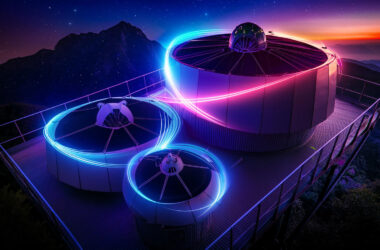This week, the Indian Space Research Organisation (ISRO) successfully demonstrated the autonomous landing capability of its reusable launch vehicle, Pushpak.
This marks a crucial step towards developing cost-effective and sustainable access to space, aligning with ISRO’s vision of making space exploration more affordable.
The Pushpak Mission
The RLV LEX-02 mission, also known as the Pushpak mission, aimed to validate the reusable launch vehicle’s autonomous landing capability under challenging conditions.

During the mission, Pushpak was released from an Indian Air Force Chinook helicopter at an altitude of 4.5 km, simulating the approach and landing conditions of a vehicle returning from space. The winged vehicle autonomously navigated towards the runway, performing cross-range corrections and precise landing manoeuvres using its brake parachute, landing gear brakes, and nose wheel steering system.
The mission was designed to demonstrate the robustness of ISRO’s indigenously developed technologies in critical areas such as navigation, control systems, landing gear, and deceleration systems. These technologies are essential for achieving a high-speed autonomous landing of a space-returning vehicle, and their validation brings India closer to realising the dream of reusable space transportation.
The Pushpak project has been a decade-long endeavour involving the dedication and expertise of numerous scientists and engineers at ISRO. The journey began with the RLV-TD (Technology Demonstration) program, which focused on developing and testing critical technologies for reusable launch vehicles. In 2016, the RLV-TD successfully flew from Sriharikota and landed on a virtual runway in the Bay of Bengal, validating the vehicle’s design and aerodynamic characteristics.
Building upon the success of RLV-TD, ISRO conducted the RLV-LEX-01 mission in April 2023 at the Chitradurga Aeronautical Test Range. During this mission, a Chinook helicopter lifted the winged rocket and released it to perform an autonomous landing, showcasing the precision and reliability of the vehicle’s systems.
After thorough certification and clearance, the RLV-LEX-02 mission’s next step was reusing the winged body and flight systems from RLV-LEX-01. This mission showcased the autonomous landing capability under more challenging conditions and showcased the reuse potential of flight hardware and systems, an essential aspect of making space launches more cost-effective.
RLV-LEX-02 Experiment:
🇮🇳ISRO nails it again!🎯Pushpak (RLV-TD), the winged vehicle, landed autonomously with precision on the runway after being released from an off-nominal position.
🚁@IAF_MCC pic.twitter.com/IHNoSOUdRx
— ISRO (@isro) March 22, 2024
Space agencies worldwide have focused on reusable launch vehicle technology. The obvious comparisons are programs like NASA’s Space Shuttle and SpaceX’s Falcon 9 in the United States, Russia’s Buran and Amur projects, and China’s ongoing developments in reusable rockets. While these programs have made significant strides in reusability, they have also faced unique challenges and setbacks.
India believes that its Pushpak project stands out for its homegrown development of critical technologies and its incremental approach to testing and validation. By focusing on a winged reusable launch vehicle design and prioritising autonomous landing capabilities, ISRO aims to develop a cost-effective and reliable solution for accessing space.
Pushpak’s autonomous landing capability has the potential to have a far-reaching impact on India’s space program and the global space industry. Reusable launch vehicles could drastically reduce the cost of space launches by enabling the recovery and reuse of expensive components such as engines and avionics.
Lower launch costs can open up new opportunities for satellite deployment, space exploration, and commercial space activities. Reusable launch vehicles can also contribute to the sustainable use of space by minimising space debris and enabling satellite retrieval and refurbishment.
In geopolitical terms, India’s achievements in reusable launch vehicle technology strengthen its position as a leading space-faring nation. They also offer affordable access to space for developing countries and emerging space economies. India wants to democratise space and foster innovation in the global space industry by driving down launch costs and promoting international collaboration.
The successful RLV LEX-02 mission marks a milestone in India’s reusable launch vehicle technology pursuit. The Pushpak project’s incremental approach to testing and validation, coupled with the homegrown development of critical technologies, demonstrates India’s commitment to affordable and sustainable space exploration.
TLDR:
- India’s reusable launch vehicle, Pushpak, successfully completes an autonomous landing test in the RLV LEX-02 mission.
- The mission demonstrates India’s capabilities in developing critical technologies for reusable space transportation.
- Pushpak’s success paves the way for affordable and sustainable access to space, benefiting India’s space program and the global space industry.







